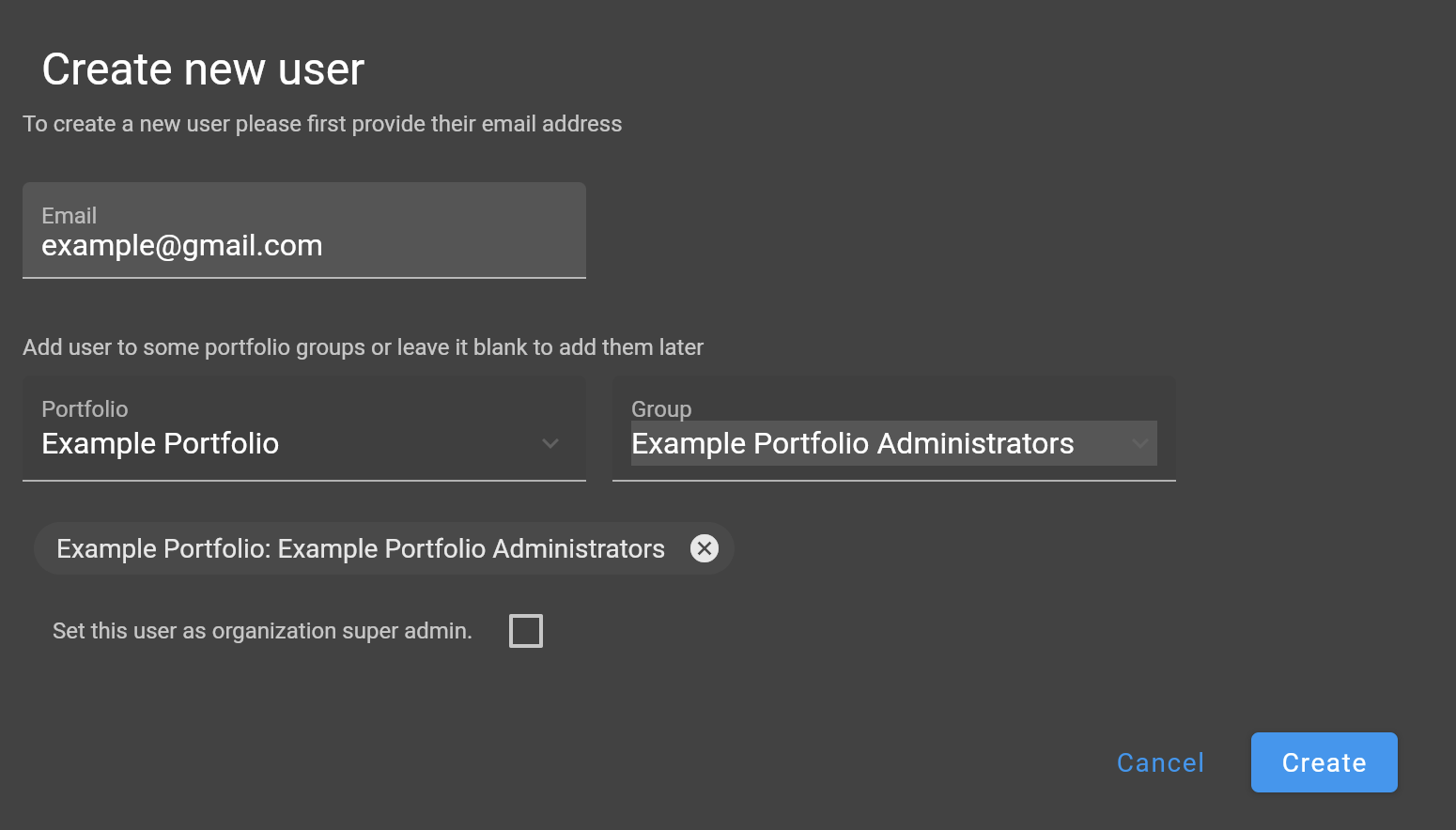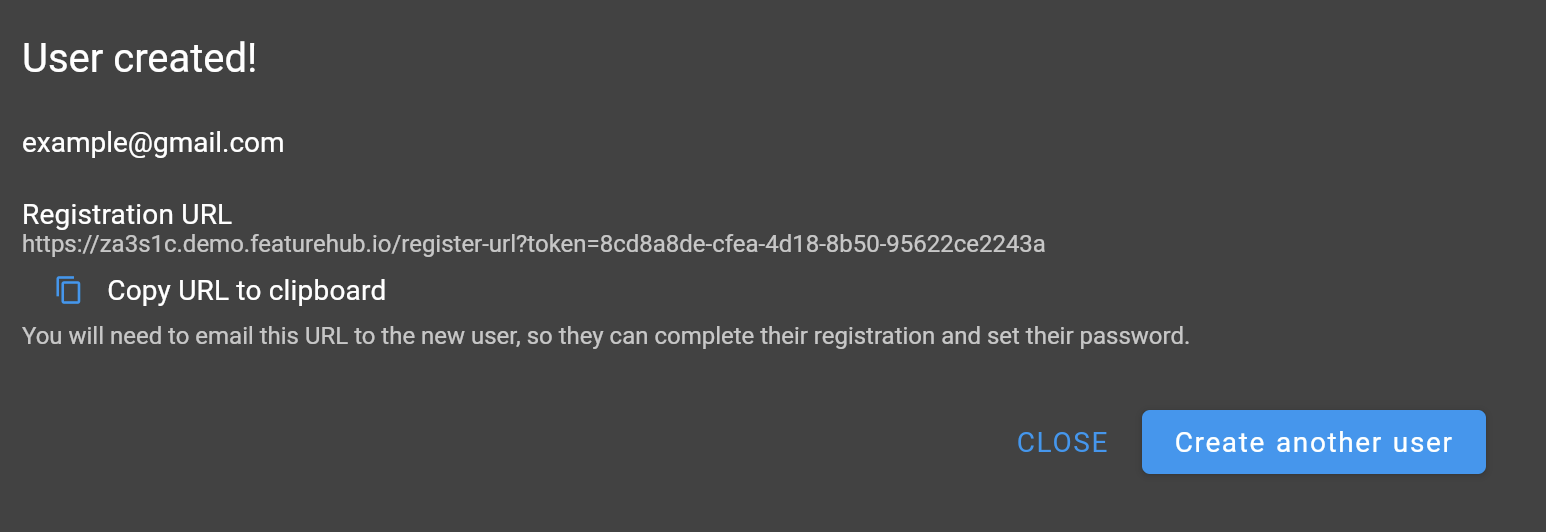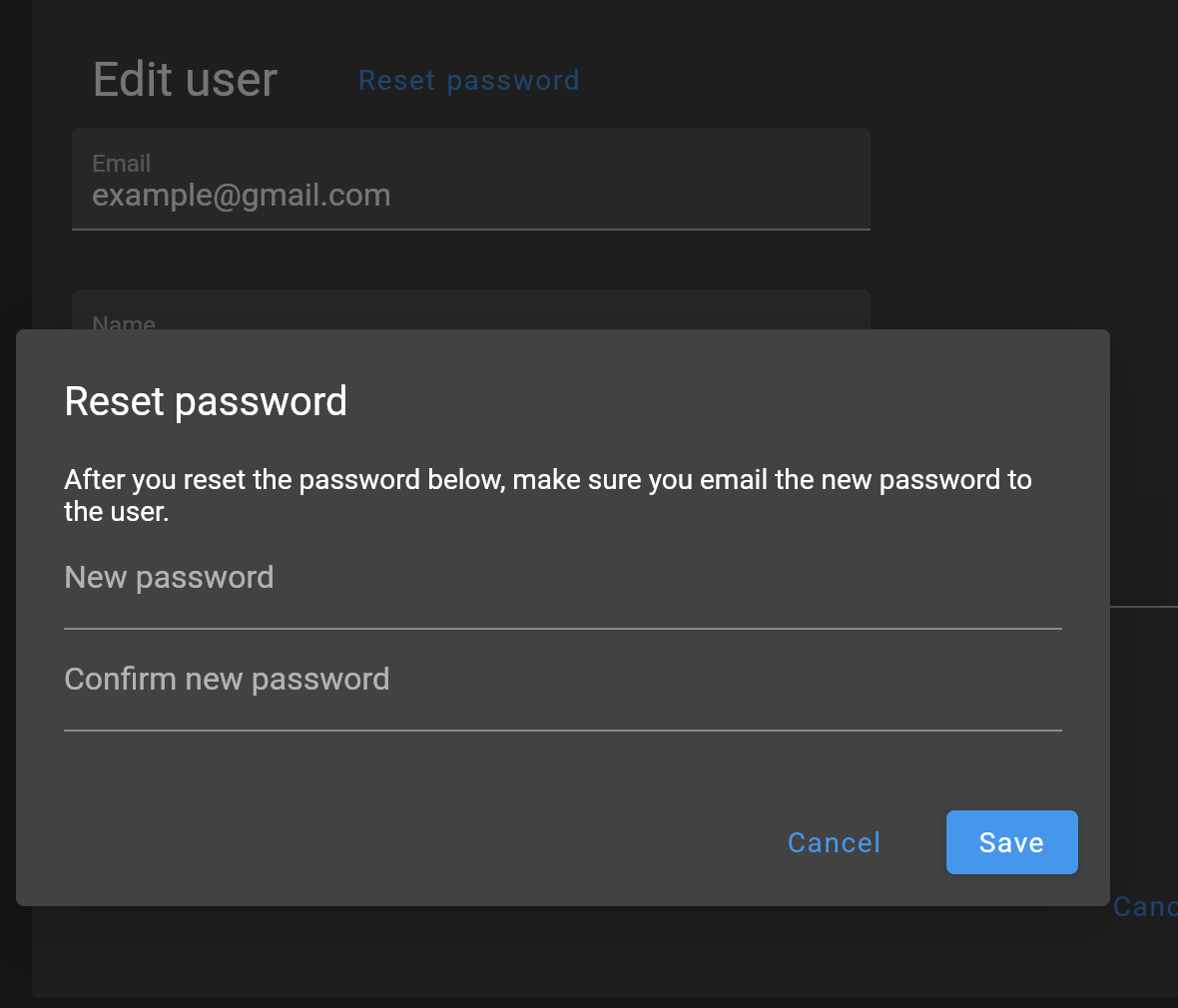Users & User Groups Permissions
Anyone with an email can be added to your organization. We encourage everyone in your team to join FeatureHub as we believe both business and technical people will benefit from using it. If you are practicing DevOps, make sure all your developers, testers and business people are onboarded.
FeatureHub provides granular user permissions which can be assigned per application and even per environment through user groups and permissions.
Users
Users can be added to an organization by members with "Super Admin" permission. Once user is added, they can be assigned a group or multiple groups. User can also be assigned a "Super Admin" role. Editing of users details and deleting users can be performed only by "Super Admins", however assigning those users to portfolio groups or removing them from the groups can also be done by users with "Portfolio Admin" role.

A user with "Super Admin" role cannot delete themselves from an organization. This is done for security reasons.
Registering for FeatureHub (only for non-SSO, SAML or social logins)
If you are using default identity option with the self-hosted FeatureHub instance, after you add a new user to the organization, you should copy the registration link and share it with the added user. They will be able to set their password and complete the registration.

Password reset (only for non-SSO, SAML or social logins)
If a user forgets their password, it can be reset by "Super Admin" user to a temporary password. Share the temporary password with the user. They will be able to reset it to a permanent password next time they attempt to login.

| FeatureHub doesn’t send emails to recover passwords or any registration or login related emails. We recommend having at least 2 users with super admin permissions, in case one of them forget their password. |
When there is only one Super Admin
When there is only a single Super Admin, and they have forgotten their password, the only way to reset it is to go to the database. To do this, in the database, find the id of the superuser in the fh_person table, and reset the password field to 1000:caffda0b26e265a0977718a548d784e6:1123a076c3925d0d77f2c902115e8732de25ae22394f74faaa52c8d9d9a829b8021299afd4a1793e47936445bb0ceff0f17f329716342db19f4e428dd5859dc1. You can then login with the password featurehub.
User groups
Groups primary purpose is to control FeatureHub user access to the features in different portfolios, application and environments. Groups are created under a portfolio. You can create one or more groups and use them to set various permissions within the portfolio. Either use the same groups across applications within the portfolio, or create separate groups for each application. Some example groups might be:
-
Developers (Typically can create features and change feature values in non-production environments)
-
Testers (Typically can change feature values in non-production environments)
-
Operations (Typically can’t create or delete features but can update values in production)
| Every Portfolio automatically gets a group called "Administrators", Simply adding people to this group will make them administrators for this portfolio, and they automatically get all feature permissions in any application within that Portfolio. |
Once you create a group, you can add users in your organization to it.
You can also add Admin Service Accounts to the user groups for programmatic control via Admin SDK API
Group permissions to control features
For each application environment, there are permissions you can assign to portfolio groups
-
Special permission to
create,editanddeleteentire feature. This includes setting and updating feature properties:name,key,description,reference_link -
READCan see the value of a feature, feature value strategies assigned, feature properties, lock/unlock status, retirement status and feature auditing -
LOCKCan lock a feature, so it’s value can’t be changed, this gives us a safety net when deploying incomplete code into production. (Typically developers and testers keep features locked until they are finished and ready to be set) -
UNLOCKCan unlock a feature, so it’s value can be changed -
CHANGE_VALUECan change the value of a feature or can "retire" a feature

Administrator groups
There are two types of administrator groups that are available by default, Organization Super Admin and Portfolio Admin.
Portfolio Administrators
Portfolio Administrators can:
-
Create and manage portfolio groups
-
Create and manage applications
-
Create and manage environments
-
Create and manage features in any application and environment
-
Create and manage service accounts
-
Manage groups access to applications
-
Add and delete user from a group
| Every Portfolio automatically gets a group called "Administrators", simply adding people to this group will make them administrators for this portfolio. |
Organization Super Admin
Organization Super Admin can:
Inherits all permissions "Portfolio Admin" has, plus: Create and manage users of the system Create and manage user groups Create and manage portfolios Create and manage Admin service accounts
In other words, organization super admin has got all privileges, hence it is recommended to have at least 2 super admins, in case one of them leaves the organization.